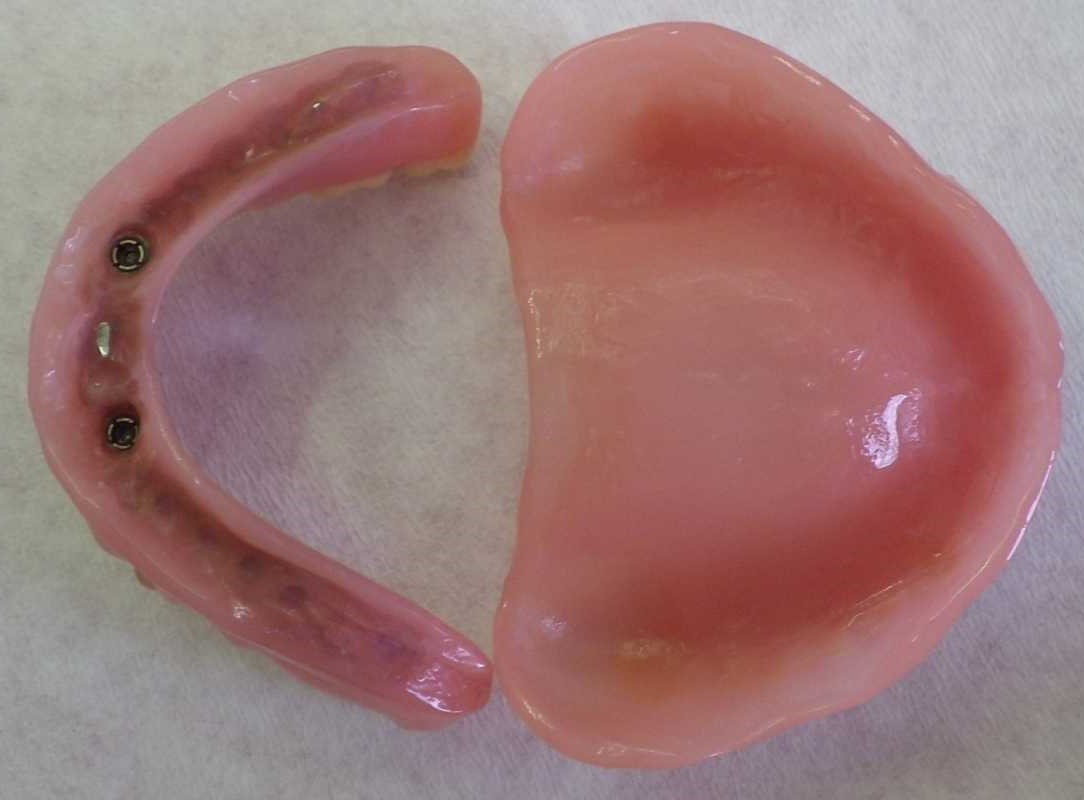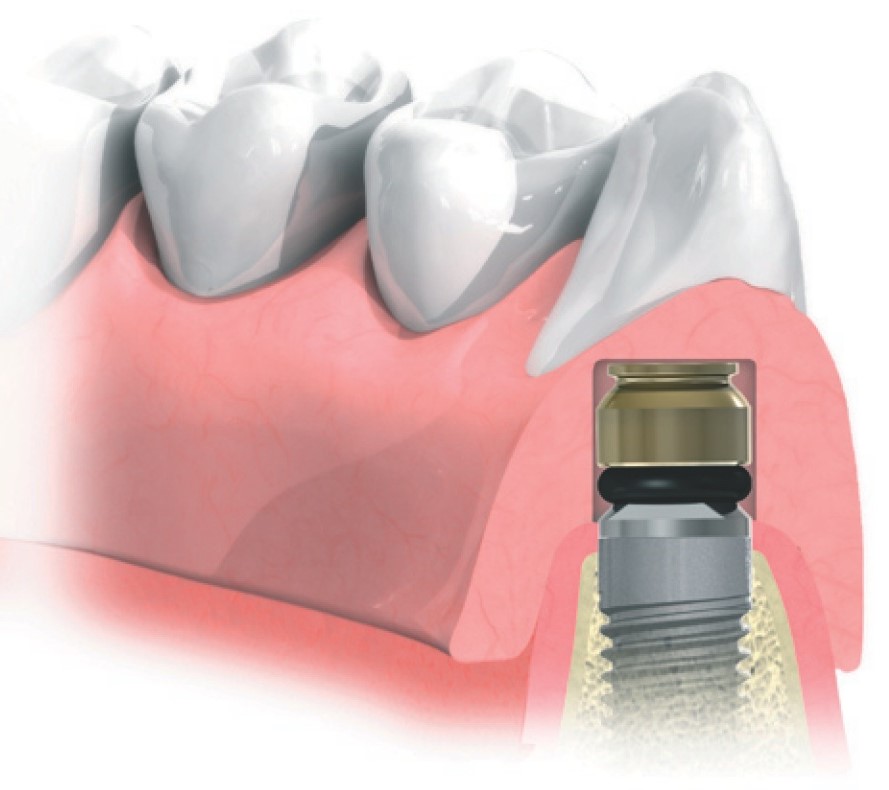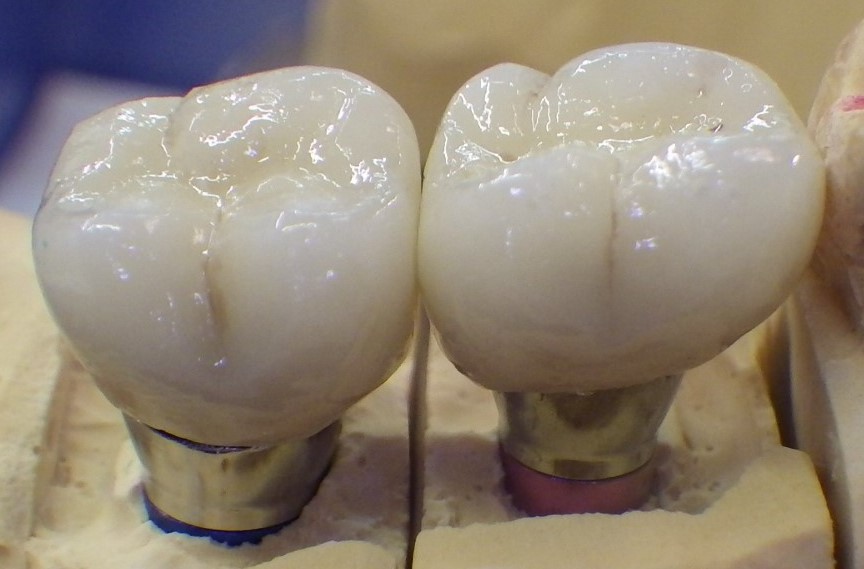Implant superstructures
Implant superstructures
Implants can basically be used in the same manner as natural teeth for supporting all types of dental restorations (single crowns, bridges, fixed-removable restorations, overdentures). A respective restoration is called a superstructure. It can be designed as removable, fixed/removable or only fixed.
 Full upper and lower dentures (fitting surface with ball sockets)
Full upper and lower dentures (fitting surface with ball sockets)
 Ball attachment
Ball attachment
A superstructure can be purely implant-supported or supported both on teeth and implants. Particularly with bridges the term used is hybrid or tooth/implant-borne.
 Implant-borne metal-ceramic crowns
Implant-borne metal-ceramic crowns
Cemented superstructures are differentiated between provisional (temporary), definitive (permanent) and semi-permanent cementation. The latter should enable secure retention and at the same time removal of the superstructure by the dentist, if necessary. This is referred to as an operator-removable (i.e. fixed for the patient) superstructure and also includes screw-retained superstructures.
Both types of retention have advantages and disadvantages:
Screw retention creates gaps, which can be colonised by bacteria. To prevent this special gels, intended to remain effective in the long-term, are supplied for applying in the interior of the implant. If superstructures are screw-retained, they can also fail due to loosening, overloading or fracturing.
As implants are not self-mobile and are anchored rigidly in the alveolar bone the aim is always to ensure a passive fit of the superstructure. With screw-retained superstructures the passive fit can be checked on a minimum of two abutments using the Sheffield test (gap-free fit when tightening any individual screw). Procedures for intraoral bonding (such as adhesive bonding) of components of the superstructure and/or digital fabrication (e.g. milling, sintering) are used to fabricate stress-free frameworks.
To avoid inaccessible excess cement, which could result in peri-implantitis and implant failure, the restoration margin of cemented superstructures should always terminate in the region of the gingival margin. This allows fabrication of implant platforms mainly at bone level with corresponding (if necessary, custom-fabricated) abutments.
Abutments are used as a connection between implants and superstructure. Angled abutments enable parallelisation to produce a common path of insertion with superstructures on several abutments. Abutments can either copy the form of a tooth preparation or include a component of a connector (e.g. press-stud systems, ball abutment, bars, magnets). In these cases the superstructure incorporates the respective complementary components.
PROBIEREN SIE ES EINFACH AUS !!!
Von uns erhalten Sie professionelle Unterstützung.
Treten Sie mit uns in Kontakt oder nutzen Sie unser Kontaktformular.
Wort des Tages
| Deutsch | Englisch |
|---|---|
| Wasseraufbereitung | water conditioning |
Schwerpunkttext des Monats
Vergrößernde Optik in der Zahntechnik Vergrößernde Optik in der Zahntechnik |
